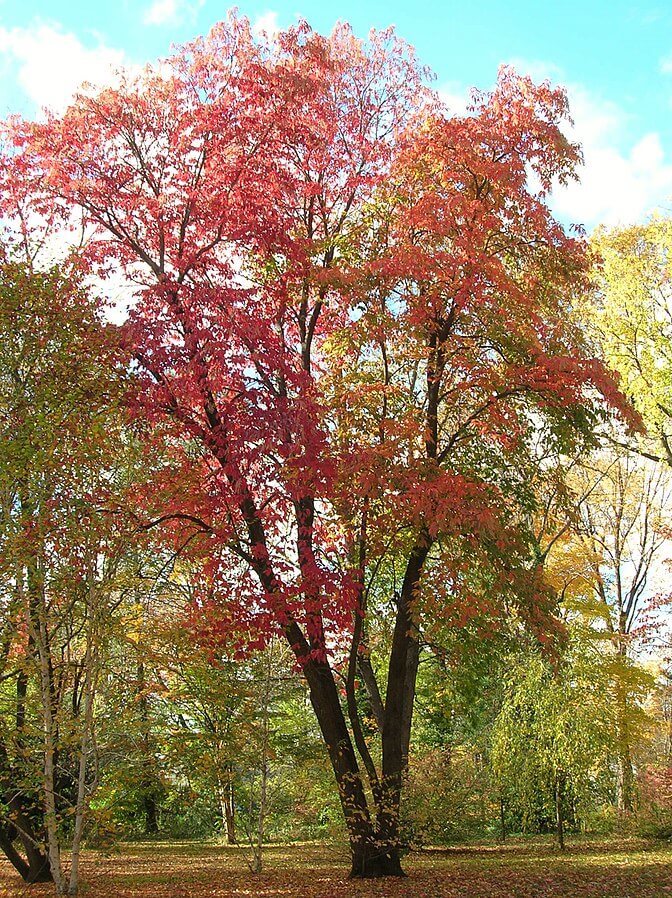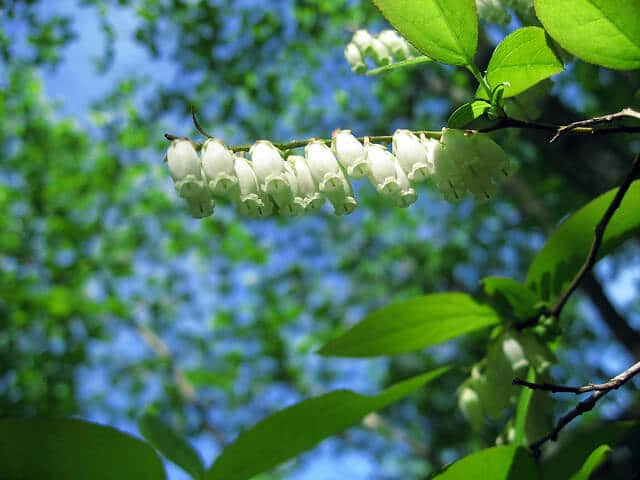
(Source: Msact/Wikimedia Commons)
Sourwood tree (Oxydendrum arboreum) is a small deciduous tree that’s native to eastern North America. This tree is especially common in Southeastern US. You can find them growing in oak-heath forests, near riverbanks, and along roadsides. This tree can easily be identified by their lush dark green foliage which turns a striking fiery red in the fall.
Aside from being a gorgeous ornamental tree, sourwood also has several culinary and medicinal uses. In fact, for hundreds of years, many Native American tribes have been using sourwood leaves to cook and to make traditional folk medicine
Edibility and culinary use
Sourwood leaves are edible; they have a pleasant acidic taste. You can consume the leaves raw or cooked. The acidic flavor can add some fresh, tanginess to many different dishes. Young sourwood leaves can be a wonderful addition to salads and stews. You can also boil sourwood leaves to make a delicious herbal tea. This herbal tea has a zesty flavor that will taste amazing when paired with honey.
Sourwood tree’s beautiful white flowers are also edible. Just like the leaves, these flowers also have a fresh, acidic taste. The juice from these flowers is usually used to make sourwood jelly. Additionally, the flowers are great to have if you’re a beekeeper. They typically bloom in early summer, providing bees with an abundance of sweet nectar. Sourwood honey is very delicious; it has a buttery, caramel-like flavor. For that reason, this honey is highly prized in the market.

(Source: Jaknouse/Wikimedia Commons)
Health benefits
To get sourwood’s health benefits, brew the leaves to make an herbal tea. This herbal tea can be used to alleviate symptoms of asthma, dysentery, diarrhea, as well as kidney and bladder ailments. But, while it can treat diarrhea, consuming sourwood leaves in high amounts isn’t recommended. This is because the leaves have a laxative effect in high doses. Aside from that, sourwood tea can also cure fevers, nausea, and stop excessive menstrual bleeding. Lastly, you can also chew the bark of this tree to treat mouth ulcers and canker sores.
Cultivation
With its gorgeous foliage, sourwood is an attractive ornamental plant. Dark green in spring and summer and burning red during fall and winter; this tree will make your garden look pretty all year long. Its small size also makes it great for smaller lawns. Moreover, as mentioned earlier, you can forage and consume its leaves and flowers.
Additionally, if you keep bees, these trees would be a wonderful addition to your garden. Every summer, these trees produce small, bell-shaped, white flowers that are very attractive to honeybees. These flowers are a great source of nectar for bees. In fact, sourwood honey is considered a delicacy for its fresh and sweet flavor.

(Source: Mrs. Gemstone/Flickr)
The hardy sourwood tree is quite easy to cultivate, albeit a bit slow. It can take up to 4 years for the tree to fully mature if you grow it from seeds. That’s why it’s better to buy young trees from a local nursery rather than growing this tree from scratch. This plant thrives when there is little root competition. So, if you intend to plant multiple sourwood trees, make sure to give at least 12” of space between each tree.
This tree can grow in a partially shaded area, but it will grow better if it’s planted in an area with full sun exposure. Sourwood tree can grow in almost every type of soil, just make sure that the soil is well-drained. Lastly, it’s also drought-tolerant so it’s great for beginners.
Cautions
Sourwood leaves and flowers are completely safe to eat in moderation. But, note that in high amounts, the leaves can act as a laxative. So try to limit your consumption to avoid unwanted side effects.
Conclusion
Famous for its gorgeous foliage, the sourwood tree has so many uses other than just being an ornamental plant. Sourwood is a wonderful cooking ingredient and a powerful herbal remedy. It’s actually rather sad that most people only see this tree as an ornamental plant when it has so many potential uses. So, the next time you see a sourwood tree, why not try including its leaves and flowers into your daily diet?
---------------
Writen by Cornelia Tjandra
Cornelia is a freelance writer with a passion for bringing words to life and sharing useful information with the world. Her educational background in natural science and social issues has given her a broad base to approach various topics with ease. Learn more about her writing services on Upwork.com or contact her directly by email at cornelia.tjandra@gmail.com
Many of our readers find that subscribing to Eat The Planet is the best way to make sure they don't miss any of our valuable information about wild edibles.
See our privacy policy for more information about ads on this site






